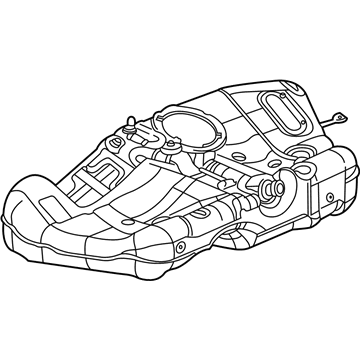
My Garage
My Account
Cart
Genuine Saturn LS1 Fuel Tank
Gas Tank- Select Vehicle by Model
- Select Vehicle by VIN
Select Vehicle by Model
orMake
Model
Year
Select Vehicle by VIN
For the most accurate results, select vehicle by your VIN (Vehicle Identification Number).
1 Fuel Tank found
Saturn LS1 Fuel Tank
In Saturn LS1 vehicles the Fuel Tank is more than just a compartment for the storage of fuel, it is the home of the electric fuel pump as well as the fuel gauge sender. The Canister Vent Valve is a major component in the management of the Evaporative Emission Control System (EVAP) that stops the leakage of fuel vapors. Such types of tanks are commonly constructed out of metal or plastic, however, since metal tanks corrode and rust, and plastic tanks crack from heat and vibrations. Today, there are fuel tanks named fuel cells which are more secure from puncture and spillage of the racing gas upon an accident. High capacity fuel tanks in military grade polymer material can be incorporated for some models to enable longer distances in one tank fill up and the tanks will not rust or crack.
Each OEM Saturn LS1 Fuel Tank we offer is competitively priced and comes with the assurance of the manufacturer's warranty for the part. Furthermore, we guarantee the speedy delivery of your orders right to your doorstep. Our hassle-free return policy is also in place for your peace of mind.
Saturn LS1 Fuel Tank Parts Questions & Experts Answers
- Q: How to remove a fuel tank on Saturn LS1?A:It is recommended to remove the fuel tank when it is nearly empty. If that is not possible, try to siphon out the fuel before removing the tank. To begin, relieve the fuel system pressure and disconnect the cable from the negative battery terminal. Raise the vehicle and secure it on jackstands. If there is still fuel in the tank, disconnect the quick-connect fitting for the fuel inlet line at the fuel filter and siphon or hand-pump the remaining fuel. Remove the intermediate exhaust pipe and muffler, followed by the rear heat shield. Disconnect the electrical connector for the Fuel Pump/fuel level sensor module and the connector for the EVAP canister vent solenoid hose. Disconnect the fuel filler neck hose and the vent hose for the fuel limit vent valve at the fuel tank. Disconnect the fuel tank ground strap and remove the rock guards. Disconnect the connector on the outlet side of the fuel filter. Support the fuel tank with a transmission jack or a floor jack, ensuring to protect the tank. Remove the fuel tank strap bolts and lower the tank partially to detach any remaining cables, hoses, or lines. Finally, lower the tank completely and proceed with the installation in reverse order. After disconnecting the battery, the Powertrain Control Module (PCM) will need to relearn its former driveability and performance characteristics.







